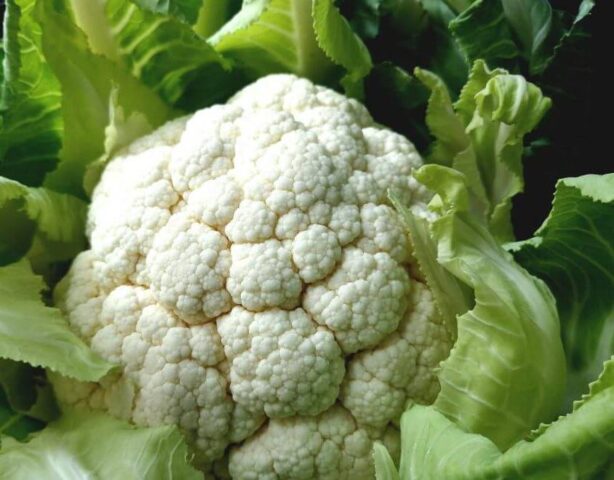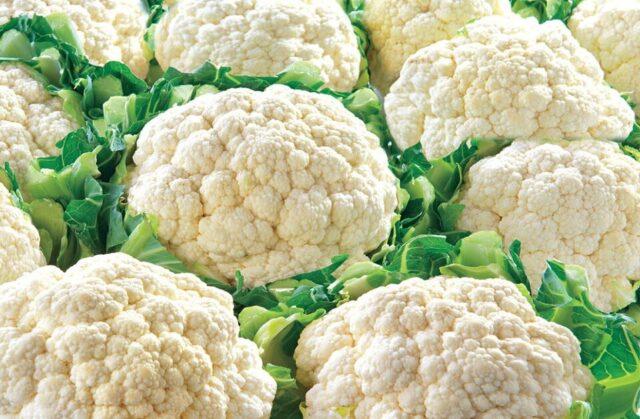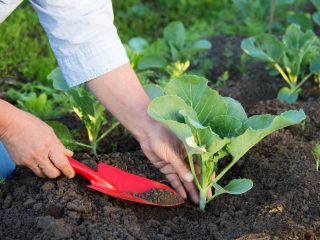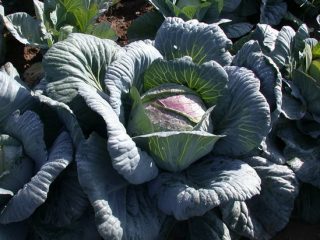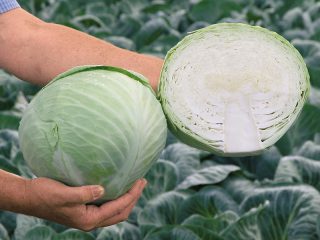Content
Cauliflower is second only to white cabbage in popularity. But it is no less beneficial for human health, since it contains many vitamins and minerals. Therefore, housewives often have a question about how to store cauliflower in winter so that the harvest lasts as long as possible. You also need to familiarize yourself with existing processing options if it is not possible to preserve the vegetable fresh.

The shelf life of vegetables directly depends on the chosen storage method.
Selection and preparation for storage
There are many varieties of cauliflower. But only middle and late types of vegetables are suitable for long-term storage. They form a dense inflorescence and are less susceptible to mechanical stress and rotting.
The following varieties are best suited for long-term storage:
- Amerigo. A mid-season hybrid with a regular rounded shape and snow-white color of the heads of cabbage. The purpose is universal. The growing season is 80-82 days. Has increased resistance to stressful weather conditions.
The average weight of Amerigo fruits is 2-3 kg
- Green snowdrift.A modern variety of Russian selection with a late ripening period. Characterized by high taste qualities. The shade of the fruits is green, they are partially covered with gray elongated leaves. The average weight of the heads is 750-850 g. The variety has increased resistance to bacteriosis. Excellent for long-term storage.
The growing season of the Green Snowdrift is 180-190 days
- Adler winter 679. Russian variety of medium ripening period. Recommended for cultivation in the North Caucasus region. Forms dense, round-flat heads with a diameter of 16 cm. Their weight is about 0.6-0.8 kg, the shade of the fruit is snow-white. The duration of the period from the emergence of seedlings to the technical maturity of the heads is extended to 213 days.
The yield of Adler winter 679 is 1.7 kg per 1 sq. m
- Adler spring. A late variety of a universally used crop. Suitable for growing in open ground. Included in the State Register in 1966, recommended in the North Caucasus region. Forms round heads weighing 0.9-1.2 kg. The color of the fruit is creamy white. The growing season takes 174-230 days.
Adler spring is suitable for fresh storage and processing
- Cortes. Mid-season variety of cauliflower. Forms dense white heads weighing 2-3 kg. Suitable for growing in open ground and greenhouses. The growing season takes 70-80 days. Ideal for conveyor harvesting throughout the summer and autumn.
The heads of Cortez are completely covered with leaves
Harvesting cauliflower is recommended in dry, clear weather. You cannot delay the procedure to avoid prolonged rainy weather in the fall. You need to cut off the heads with a sharp knife, leaving 2-3 leaves.
Fruits without mechanical damage or signs of rotting are suitable for winter storage. In this case, the heads can be dense or moderately loose.
Storage conditions for cauliflower
The shelf life of fresh vegetables directly depends on the conditions under which they are kept. Their non-compliance leads to rapid spoilage of the product.
Necessary storage conditions:
- temperature within 0-6 °C;
- air humidity 85-95%;
- exposure to direct sunlight is unacceptable;
- good ventilation.
Storing cauliflower at home
At home, storing crops is possible in different ways. A cellar, basement, freezer, or refrigerator are suitable for this. Storage can also occur at room temperature. But in order for this healthy vegetable to preserve its commercial properties for as long as possible, you need to know what recommendations to follow in each specific case.
How to Keep Cauliflower Fresh Longer in the Refrigerator
When storing cauliflower in the refrigerator, remove the leaves from the heads, wash and dry. Then wrap each fruit with paper and then with cling film. This will keep the inflorescences fresh and prevent rotting. It is recommended to place fruits in the vegetable compartment.
Inspect the cauliflower daily, and if the integrity of the protective layer is damaged, replace it. The shelf life of fresh cauliflower in the refrigerator is 7-10 days. And when boiled, it can sit for two days.
In the freezer
When using this storage method, cauliflower retains its consumer properties for up to nine months. But when frozen, its taste is slightly lost.
Before storing, the inflorescences must be divided into separate parts, no larger than 4 cm in size. Then boil the vegetables in salted water for a couple of minutes, and then dry and cool. After this, place the pieces of cauliflower in the freezer drawer, in one layer so that they do not touch each other. After 4-5 hours, take them out and pack them into bags or containers.

Only dry inflorescences can be frozen
At room temperature
In this case, you can only keep cauliflower fresh for a few days. To do this, you need to clear the leaves from the heads of cabbage and wrap each one in paper. Afterwards, place the fruits in a cool, dark place so that they do not touch each other. The heads should be checked daily for signs of rot.
On the balcony
It is possible to store cauliflower for the winter on the balcony. But at the same time, it is necessary to exclude the possibility of direct sunlight hitting it. It is also important that the harvested crop does not freeze. Therefore, an unglazed balcony is not suitable in this case.
The harvest must be wrapped in paper before storing. And then carefully place the fruits in baskets, cardboard boxes or plywood boxes. At the same time, in places where they touch each other, you need to place paper napkins folded in several layers. Periodically inspect the fruits and promptly remove spoiled specimens.

The balcony must be regularly ventilated to prevent premature rotting of the fruits.
In the cellar or basement
A basement or cellar is ideal for storing cauliflower fresh if the indoor climate is suitable for this.In this case, the shelf life of the product reaches 3-4 months.
To store cauliflower heads for the winter, wrap them in two layers of paper and place them in a wooden box. The top of the container should be covered with black film to maintain an optimal level of humidity inside. Periodically, the box must be opened for ventilation and the accumulated condensation removed. It is also recommended to sort through the cauliflower once a month to discard spoiled specimens.
It is possible to store cauliflower hanging in a basement or cellar. To do this, you need to tie a rope to the stalk and hang the heads at a distance of 3-5 cm from each other.
Other options
If it is not possible to properly store fresh cauliflower, then it is recommended to process the harvested crop. The fruits can be dried or preserved. In this case, they retain most of the beneficial vitamins and minerals.
Drying
When using this storage method, you need to take into account that 1 kg of cauliflower produces 150 g of dried product. This preparation can be used for preparing any dishes after pre-soaking it in water.
Algorithm of actions:
- Disassemble the head of cabbage into inflorescences.
- Wash them thoroughly and dry slightly.
- Blanch the raw material for two minutes.
- Place in a colander and let the water drain.
- Arrange the inflorescences in a single layer on the drying rack.
- Close the lid.
- Dry until ready for several days.
The finished product can be stored in sealed glass containers at room temperature, excluding exposure to direct sunlight. The shelf life of dried cauliflower is six months.
Conservation
There are many recipes for preserving this vegetable for the winter.Therefore, choosing the right one for each housewife will not be particularly difficult.
Even the simplest recipe for preserving it for the winter can guarantee long-term preservation of cauliflower and excellent taste of the preparation for the winter. It can be used not only by experienced, but also by novice cooks.

If desired, cauliflower can be canned along with tomatoes, bell peppers, and carrots
You will need:
- 1-2 heads of cauliflower;
- 2-3 buds of cloves;
- 3-4 peas of black allspice;
- 2-3 bay leaves;
- 100 g sugar;
- 50 ml vinegar 9%;
- salt to taste;
- lemon acid.
Cooking process:
- Divide the head into inflorescences and wash them thoroughly.
- Fill an enamel pan with water, add 1 g of citric acid and 25 g of salt per liter.
- Bring the solution to a boil.
- Blanch the inflorescences in it for 3-4 minutes.
- Transfer them with a slotted spoon to cold water and then dry.
- Pour spices into the bottom of sterilized jars.
- Place the inflorescences in them.
- Place a pot of water on the stove.
- Add salt, sugar and vinegar to taste.
- Boil the marinade for several minutes.
- Pour the mixture into jars and roll up.
Common mistakes
Sometimes even minor mistakes can significantly shorten the shelf life of a crop. To prevent this, you need to know the most common ones.
Possible mistakes when storing cauliflower:
- re-freezing;
- temperature changes;
- lack of good ventilation;
- harvesting immediately after rain.
Recommendations
There are several recommendations that, if followed, will help extend the shelf life of the fresh product.
Among them:
- Harvesting cauliflower for winter storage should be done before frost. Otherwise, bitterness will appear in the taste, and its tint will turn gray.
- Only unripe heads, in which the inflorescences are pressed together, are suitable for winter storage.
- Fruits should be stored separately from other vegetables in the basement, cellar, or on the balcony.
- When storing cauliflower in the refrigerator, wrap it in cling film rather than using plastic bags.
- When collecting unripe heads of cabbage, the root must be left behind. And then in the basement or cellar, bury the cauliflower in boxes filled with damp soil.
Conclusion
You need to store cauliflower correctly, only in this case the crop will retain vitamins, minerals and taste for as long as possible. Otherwise, the fruits will quickly wither and rot, and all the efforts spent will be in vain.


